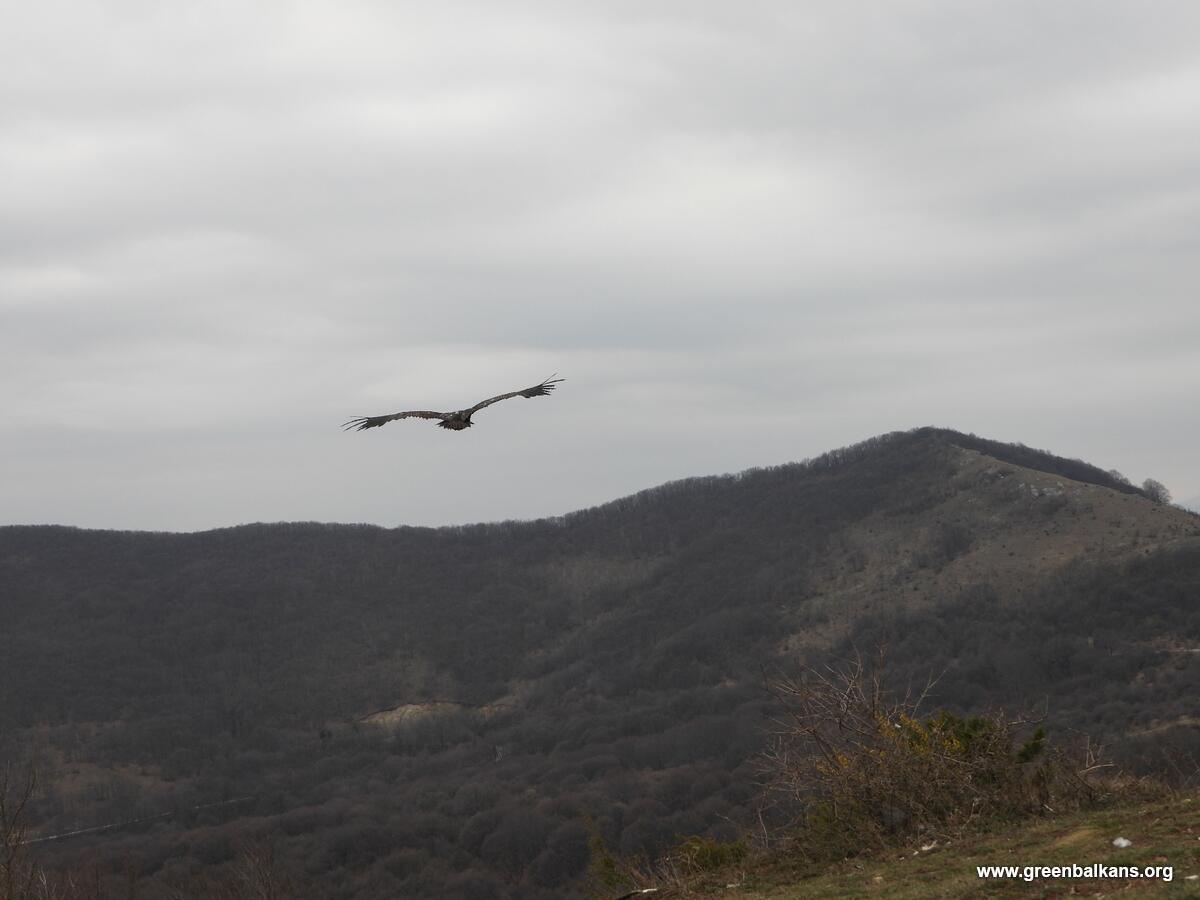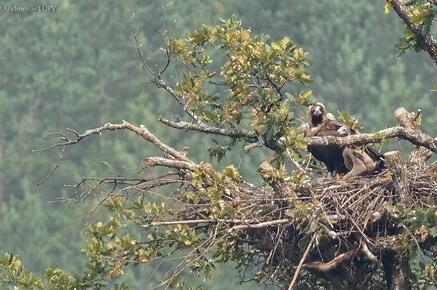The last two Cinereous Vultures were recently released into the wild in Bulgaria as part of the Vultures Back to LIFE project. After seven years of targeted conservation actions, this LIFE-funded project successfully restored the Cinereous Vulture as a breeding species in the country and recently came to an end in the summer of 2022.
Two vultures were released and the project was successfully completed
Cinereous Vultures originating from Spain spend months in acclimatization aviaries before their release into Bulgaria’s wild. In this way, they better adapt to their new environment and prepare for life in the wild, boosting their chances of survival. This was the case for the last remaining Cinereous Vultures – two females that spent months in the Vrachanski Nature Park in the western part of the Balkan Mountains in Bulgaria. In early August, they were finally ready, but before their release, a project team consisting of Hristo Peshev, Polya Ruseva, Iva Zhekova and Zhoro Stoyanov placed GPS transmitters on the two female birds. This monitoring action enables conservationists to learn more about their movements and behaviour and better identify and mitigate the dangers they face.


After all the reintroductions of recent years, the release of these last two female vultures was still something special. It will be exciting to see how the vultures acclimatize to their new environment. I am confident that they will be successful, like the majority of the other vultures released into the wild.
Hristo Peshev from FWFF
The final release represented the culmination of Vultures Back to LIFE, a seven-year EU-funded LIFE-Project that strived to bring back the Cinereous Vulture to its traditional range in the Balkan Mountains after the Bulgarian population was driven to extinction decades ago.
Releasing Spanish Cinereous Vultures to Bulgaria
Since 2018, the project team released around 70 young Cinereous Vultures in various regions of the Balkan Mountains – some birds came from captive breeding backgrounds but most originated from the wild in Spain. These Spanish and young Cinereous Vultures found themselves in distress and were then rescued and rehabilitated. The Junta de Extremadura has been donating some of the recovered birds to this project annually while AMUS prepared them for their transport by conducting the necessary quarantine period and health checks. The Vulture Conservation Foundation (VCF) then arranged the transportation to Bulgaria, where birds travelled in suitable vehicles, covering over 4,000 km by land. After their arrival in the country, the Green Balkans and Fund for Wild Flora and Fauna (FWFF) swiftly transferred them to specially constructed acclimatization aviaries ahead of their release in the coming months.
The comeback of the Cinereous Vulture to Bulgaria
Despite isolated setbacks, such as the poisoning of released vultures, the reintroduction project has been very successful. Just a few years after the first releases, the Cinereous Vulture has already been restored as a breeding species in the country, successfully nesting in the Eastern and Western Balkan Mountains, with more than 20 birds settled and 3-5 formed pairs. This year and last year, several pairs of the reintroduced Cinereous Vultures have already raised offspring – earlier than the experts expected. The foundation for a permanent return of the giant vulture has been laid.
The restoration of the Cinereous Vulture in Bulgaria and the Balkan Mountains also marks an international success since the species almost went extinct in the Balkans. Before the return of the species in Bulgaria, the only colony Cinereous Vulture colony in the Balkans remained in Dadia-Lefkimi-Soufli Forest National Park in Greece. Bulgaria is now only the fifth country in the EU where the species breeds, after Spain, France, Portugal and Greece.
The Vultures Back to LIFE project

Led by Green Balkans in collaboration with the Fund for Wild Flora and Fauna, Vulture Conservation Foundation, Junta de Extremadura and Euronatur, the Vultures Back to LIFE project aimed to reintroduce the Cinereous or Eurasian Black Vulture to Bulgaria – an objective that was successfully achieved. The team transferred and released into the wild around 70 birds, some coming from captive-breeding backgrounds but mostly from Spanish wildlife rehabilitation centres. The project also created supplementary feeding stations, increased populations of wild herbivores, improved nesting conditions and tackled some of the major threats to support the return of the species.




